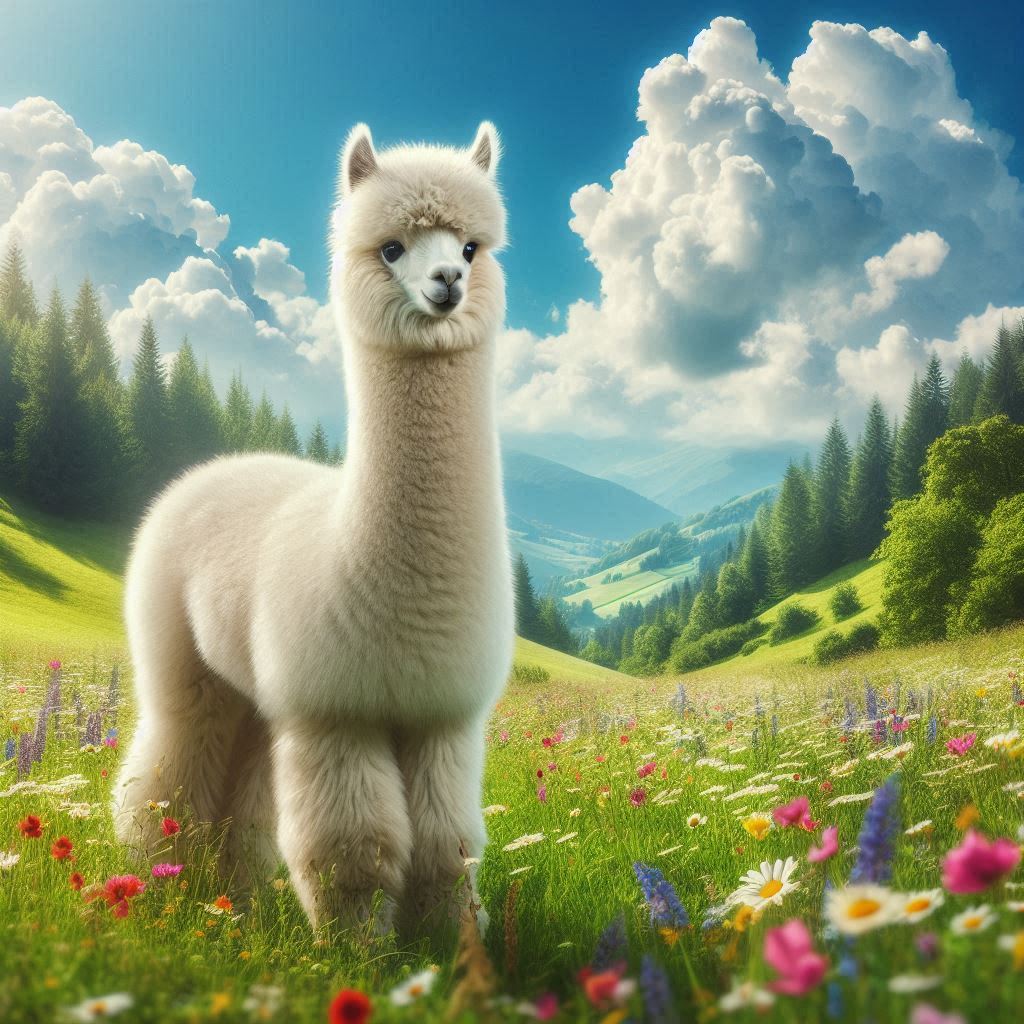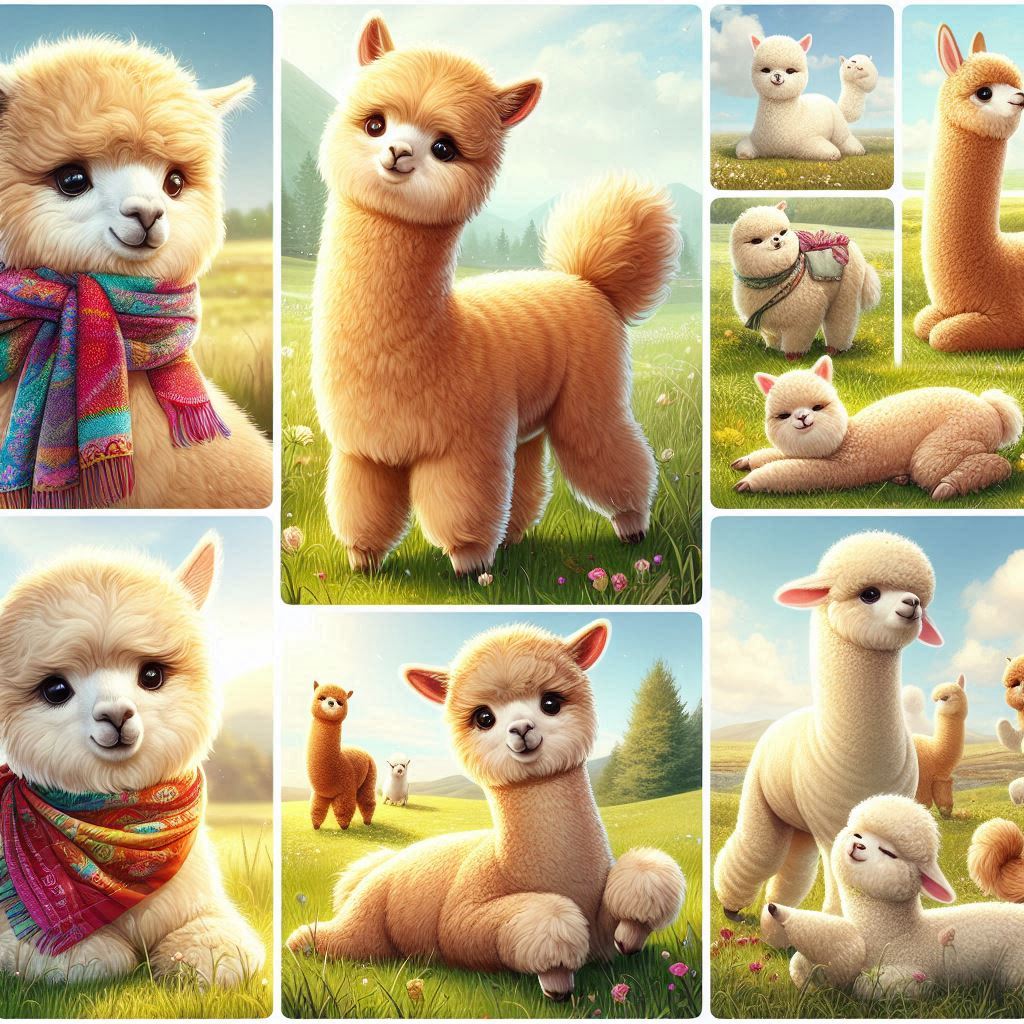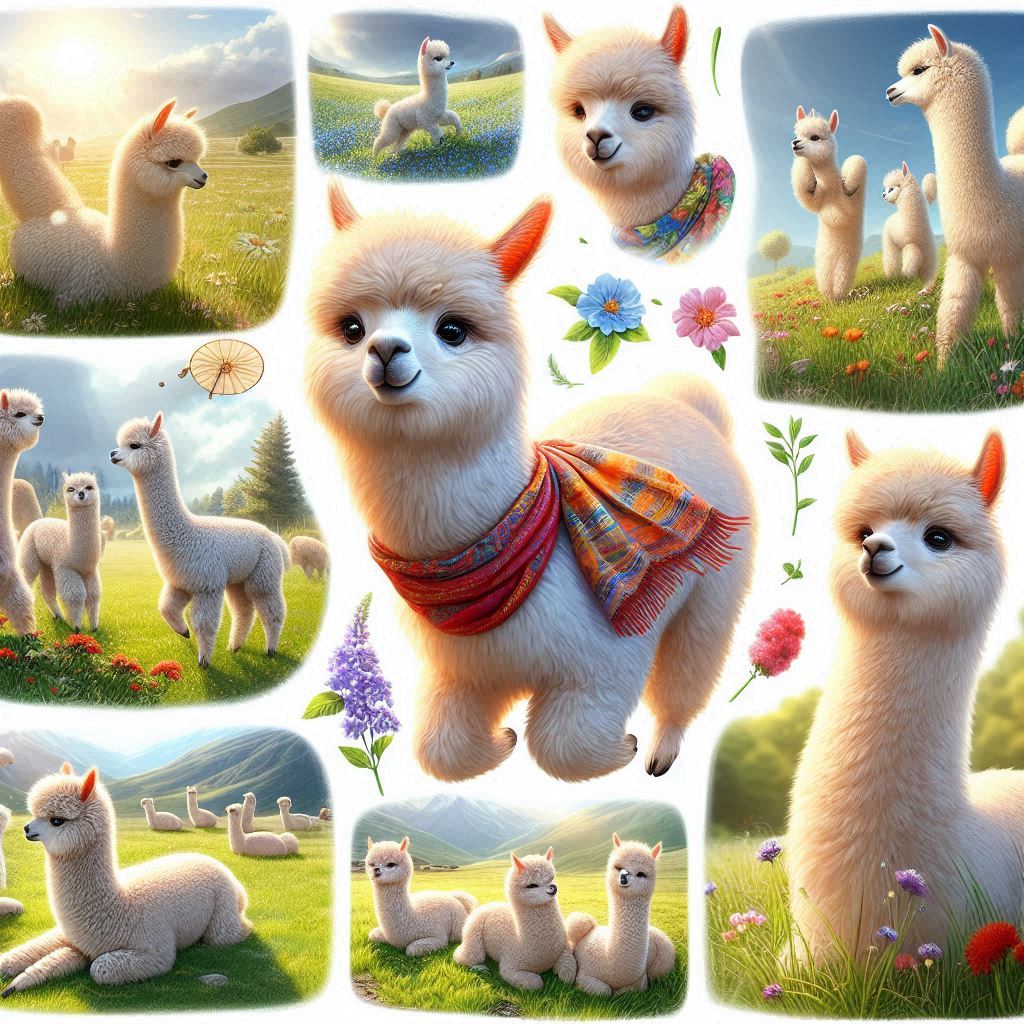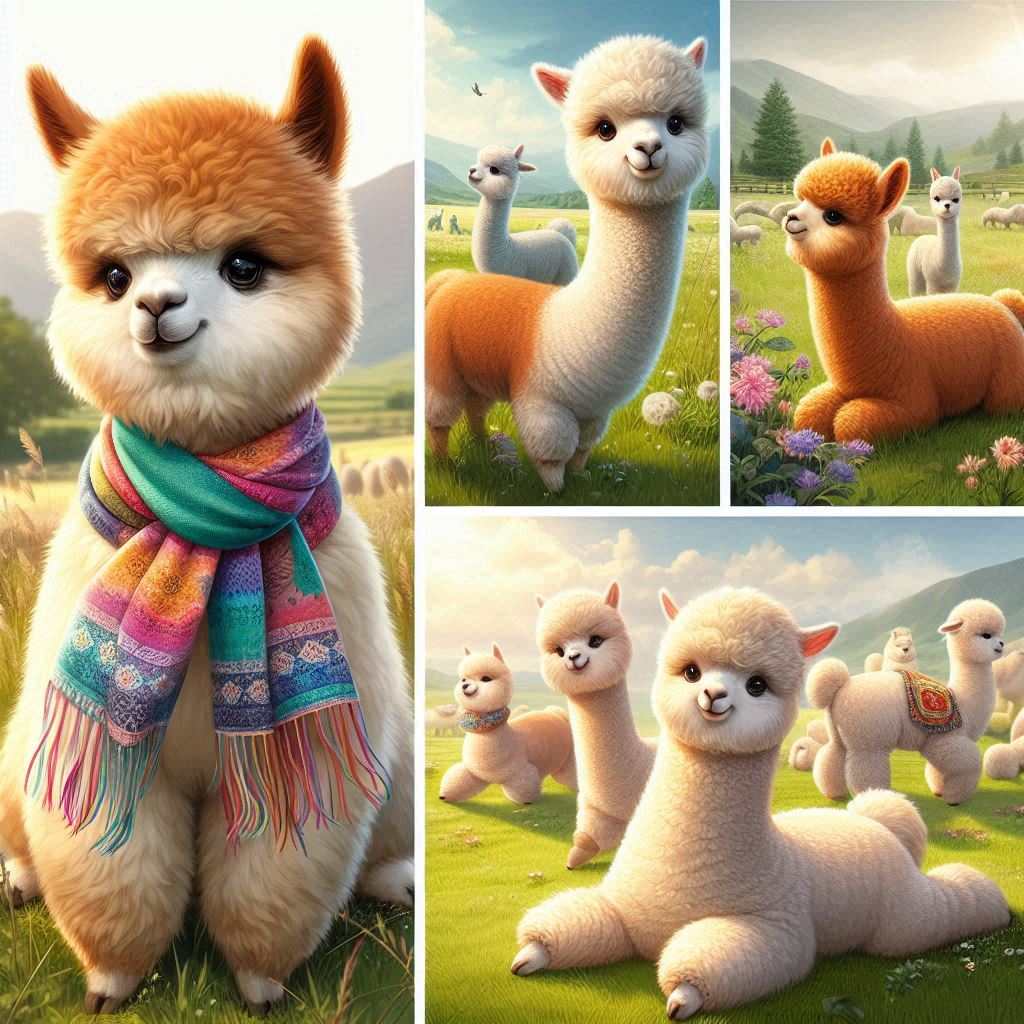🦙 Alpaca – General Overview
The alpaca is a domesticated South American camelid, prized for its soft, luxurious wool and gentle temperament. Native to the high altitudes of the Andes Mountains, alpacas have been bred by Andean cultures for thousands of years and are distinct from llamas, though closely related. They are mostly raised for fiber, companionship, and eco-friendly livestock farming.

📊 Classification
- Kingdom: Animalia
- Phylum: Chordata
- Class: Mammalia
- Order: Artiodactyla (even-toed ungulates)
- Family: Camelidae
- Genus: Vicugna
- Species: Vicugna pacos
🧬 Physical Characteristics
- Size: 32–39 inches tall at the shoulder (about 1 meter)
- Weight: 100–190 lbs (45–86 kg)
- Wool: Soft, warm, hypoallergenic fleece in over 20 natural colors
- Body: Slender frame, long neck, small head
- Ears: Spear-shaped (shorter than a llama’s)
- Lifespan: 15–20 years (can live longer in captivity)

🌍 Habitat
- Native to the Andes Mountains in Peru, Bolivia, Ecuador, and Chile
- Thrive at high elevations (up to 4,800 meters / 15,700 ft)
- Also now farmed in the United States, Australia, New Zealand, and Europe
- Adapted to cold, dry climates with sparse vegetation
🍴 Diet
- Herbivores: Graze on grass, hay, and native vegetation
- Efficient digesters with a three-compartment stomach
- Eat small amounts relative to their size — eco-friendly livestock
- Require access to fresh water and salt/mineral supplements
🧠 Behavior
- Social and herd-oriented animals; become stressed in isolation
- Communicate through body language, ear position, and gentle vocalizations (humming)
- Generally calm, shy, and curious — but can spit when annoyed or threatened
- Use communal dung piles, which helps reduce parasite spread
- Gentle and easy to handle, making them popular for petting zoos and therapy programs

🐣 Reproduction
- Breeding: Induced ovulators — mating triggers ovulation
- Gestation: ~11.5 months (340–345 days)
- Offspring: One baby (called a cria) per pregnancy
- Cria can stand and nurse within an hour of birth
- Females can breed again a few weeks after giving birth
📉 Conservation Status
- Domesticated species – not endangered
- Wild relative, the vicuña, is protected and has made a conservation comeback
- Sustainable farming practices help preserve alpaca health and genetic diversity

🌟 Fun Facts
- Alpaca fiber is warmer, lighter, and softer than sheep’s wool
- Two types of alpacas:
- Huacaya (fluffy, crimpy fleece – most common)
- Suri (silky, dreadlock-like fleece – rarer)
- They hum to communicate, especially between mothers and crias
- Have excellent vision and can see well at night
- They don’t have upper teeth in the front, which helps them graze without damaging grass roots
- Considered eco-friendly livestock: low methane output, soft-padded feet, and efficient eaters
- Often confused with llamas, but alpacas are smaller, woolier, and gentler